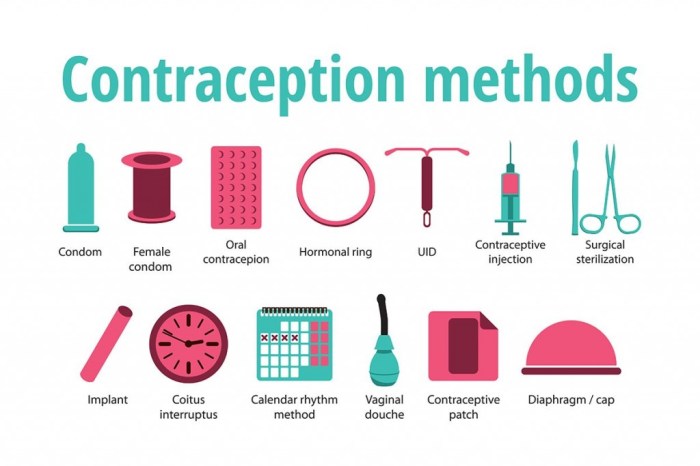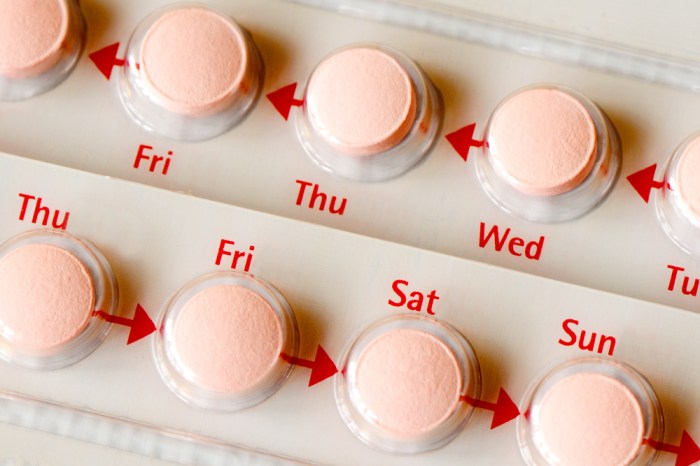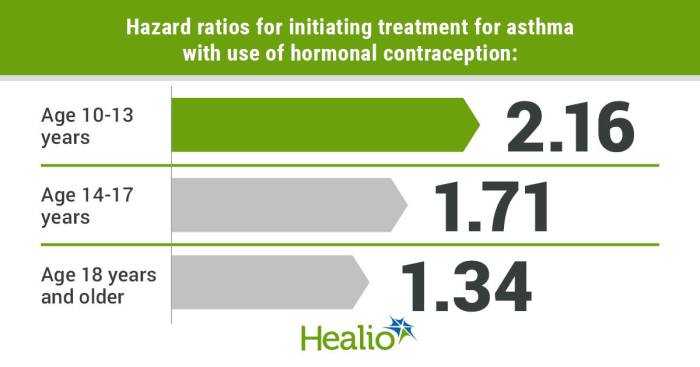Which statement about contraceptive use in adolescence is true? As this question takes center stage, we delve into a comprehensive exploration of the prevalence, methods, and impact of contraception among adolescents. This discourse promises to shed light on the complexities surrounding this critical issue, empowering readers with the knowledge and insights they need to make informed decisions.
Contraceptive use in adolescence has a profound impact on the physical, emotional, and social well-being of young people. Understanding the prevalence, methods, and barriers to contraceptive use is essential for developing effective strategies to promote adolescent sexual health and prevent unintended pregnancy.
Prevalence of Contraceptive Use in Adolescence
Contraceptive use among adolescents remains a critical public health concern. The prevalence of contraceptive use varies widely across countries and regions, but overall, it remains low.
According to the World Health Organization (WHO), only about 55% of sexually active adolescents use contraception globally. This percentage is even lower in developing countries, where access to contraceptive services is often limited.
Factors influencing contraceptive use among adolescents include age, gender, socioeconomic status, and access to information and services.
Age, Which statement about contraceptive use in adolescence is true
Adolescents who are older are more likely to use contraception than those who are younger. This is likely due to increased sexual activity and awareness of the risks of unintended pregnancy.
Gender
Female adolescents are more likely to use contraception than male adolescents. This is likely due to the fact that females are more likely to be responsible for preventing pregnancy.
Socioeconomic status
Adolescents from lower socioeconomic backgrounds are less likely to use contraception than those from higher socioeconomic backgrounds. This is likely due to lack of access to information and services, as well as cultural and social factors.
Methods of Contraception for Adolescents

There are a variety of contraceptive methods available to adolescents, including:
- Condoms
- Birth control pills
- Intrauterine devices (IUDs)
- Implants
- Injections
- Emergency contraception
Each method has its own advantages and disadvantages, and the best method for a particular adolescent will depend on their individual needs and preferences.
Condoms
Condoms are the only contraceptive method that can protect against both pregnancy and sexually transmitted infections (STIs). They are available over-the-counter and are relatively inexpensive.
Birth control pills
Birth control pills are a type of hormonal contraception that is taken orally once a day. They are very effective at preventing pregnancy, but they can have side effects such as nausea, vomiting, and mood changes.
Intrauterine devices (IUDs)
IUDs are small devices that are inserted into the uterus by a healthcare provider. They are very effective at preventing pregnancy and can last for up to 10 years.
Implants
Implants are small rods that are inserted under the skin of the upper arm by a healthcare provider. They are very effective at preventing pregnancy and can last for up to three years.
Injections
Injections are a type of hormonal contraception that is given every three months by a healthcare provider. They are very effective at preventing pregnancy, but they can have side effects such as irregular bleeding and weight gain.
Emergency contraception
Emergency contraception is a type of contraception that can be taken after unprotected sex to prevent pregnancy. It is most effective when taken within 72 hours of unprotected sex.
Barriers to Contraceptive Use in Adolescence: Which Statement About Contraceptive Use In Adolescence Is True
There are a number of barriers to contraceptive use among adolescents, including:
- Lack of access to information and services
- Stigma
- Fear of side effects
- Cost
- Parental disapproval
Lack of access to information and services is a major barrier to contraceptive use among adolescents. Many adolescents do not have access to comprehensive sexual health education, and they may not know where to go to get contraception.
Stigma is another major barrier to contraceptive use among adolescents. Many adolescents are afraid of being judged or shamed if they use contraception. This stigma can prevent adolescents from seeking out contraception or using it consistently.
Fear of side effects is also a common barrier to contraceptive use among adolescents. Many adolescents are concerned about the potential side effects of contraception, such as weight gain, nausea, and mood changes.
Consequences of Unintended Pregnancy in Adolescence

Unintended pregnancy can have a number of negative consequences for adolescents, including:
- Physical health risks
- Emotional health risks
- Social health risks
Physical health risks of unintended pregnancy include premature birth, low birth weight, and infant mortality. Adolescents who are pregnant are also more likely to experience anemia, preeclampsia, and postpartum depression.
Emotional health risks of unintended pregnancy include anxiety, depression, and low self-esteem. Adolescents who are pregnant are also more likely to drop out of school and experience relationship problems.
Social health risks of unintended pregnancy include poverty, homelessness, and unemployment. Adolescents who are pregnant are also more likely to experience violence and abuse.
Importance of Adolescent Sexual Health Education
Comprehensive sexual health education is essential for promoting contraceptive use among adolescents. Sexual health education can help adolescents to:
- Understand their bodies and sexuality
- Make informed decisions about their sexual health
- Access contraception and other sexual health services
Sexual health education can also help to reduce stigma associated with contraception and unintended pregnancy. By providing adolescents with accurate information and support, sexual health education can help them to make healthy choices about their sexual health.
Strategies for Improving Contraceptive Use in Adolescence

There are a number of strategies that can be implemented to improve contraceptive use among adolescents, including:
- Increasing access to information and services
- Reducing stigma
- Providing confidential services
- Involving parents and caregivers
Increasing access to information and services is essential for improving contraceptive use among adolescents. This can be done through school-based sexual health education programs, community health centers, and online resources.
Reducing stigma is another important strategy for improving contraceptive use among adolescents. This can be done through public awareness campaigns, media literacy programs, and peer education.
Providing confidential services is also essential for improving contraceptive use among adolescents. This means that adolescents should be able to access contraception and other sexual health services without fear of judgment or discrimination.
General Inquiries
What is the most effective method of contraception for adolescents?
The most effective method of contraception for adolescents is the long-acting reversible contraceptive (LARC), such as an intrauterine device (IUD) or implant.
What are the common barriers to contraceptive use among adolescents?
Common barriers to contraceptive use among adolescents include lack of access to information, stigma, fear of side effects, and lack of parental support.
What are the consequences of unintended pregnancy in adolescence?
Unintended pregnancy in adolescence can have significant physical, emotional, and social consequences, including increased risk of贫血, premature birth, and low birth weight; higher rates of school dropout and unemployment; and increased risk of poverty.